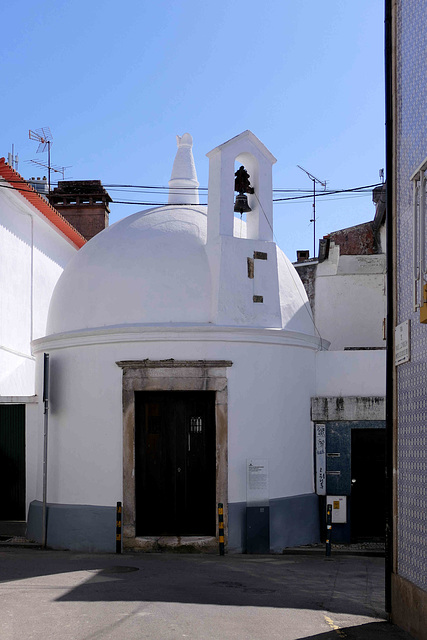Ericeira, Portugal HBM
Ericeira, Portugal
Cambridge - Church of the Holy Sepulchre
Lucena - Iglesia de San Mateo
Lucena - Iglesia de San Mateo
Lucena - Iglesia de San Mateo
Lucena - Iglesia de San Mateo
Ferreira do Alentejo - Capela do Calvário
Chaves - São João de Deus
Chaves - São João de Deus
Butrint
Butrint
Butrint
Gjirokastër - Orthodox Cathedral
Italy, Cappella di San Galgano
Margam Abbey
Margam Abbey
Italy, Chapel of San Galgano on the Hill of Monte…
Orphir - Round Church
Ericeira, Portugal HBM
Alburquerque
Córdoba - Santo Domingo de Silos
Greece - Glyfada, Cathedral of Saints Constantine…
San Michele Arcangelo
Romania, Library of St. John's from Neamț and Neam…
Segovia - La Vera Cruz
Moldova, Bălți, Sts. Emperors Constantine and Elen…
Almazán - Ermita de Jesus
Ottmarsheim >>>>>>>
Манастир Добриловина.
Havelberg - St. Annen und Gertraudenkapelle
Torino - Basilica di Superga
Torino - Gran Madre di Dio
Frankfurt - Paulskirche
La Spezia - Cattedrale di Cristo Re
Pistoia - Battistero di San Giovanni in Corte
Florence - Battistero di San Giovanni
Todi - Santa María de la Consolación
Antrodoco - Santa Maria Extra Moenia
Antrodoco - Santa Maria Extra Moenia
Brindisi - San Giovanni al Sepolcro
Brindisi - San Giovanni al Sepolcro
Location
Lat, Lng:
You can copy the above to your favourite mapping app.
Address: unknown
You can copy the above to your favourite mapping app.
Address: unknown
See also...
See more...Keywords
Authorizations, license
-
Visible by: Everyone -
All rights reserved
-
123 visits
Aveiro - Capela de São Bartolomeu


With around 80,000 inhabitants, Aveiro is the second largest city in the Centro region (after Coimbra).
Aveiro was a center of salt production and a trading center in the Middle Ages.
Born in Aveiro in the 16th century, Joao Affonso was one of the first seafarers to visit the rich fishing grounds of Newfoundland, and Aveiro's fishermen soon took an active part in the lucrative fishing industry there. As a result, the population rose to 14,000 inhabitants.
Due to a storm, the harbor entrance silted up in 1575 to such an extent that shipping and fishing were severely impaired. Fertile land became marshy. The population fell to around 3,500 by the end of the 18th century. Aveiro was slow to recover. In 1808, after several unsuccessful attempts, a new port entrance was opened.
The preserved chapel corresponds to the pediment of the main façade and the openings are decorated with shells, scrolls, wreaths and rosettes.
It is possible that there was once a chapel here, built to commemorate the royal wedding of D. Dinis and D. Isabel de Aragão, which was celebrated in this village in 1282. However, the current chapel was built in 1568 and reconstructed in 1778. It is built in the Baroque style and has a hexagonal floor plan.
It is only opened once a day, on August 24. On this day, the devil walks through the area and the faithful avoid risky work as strange occurrences can happen. Legend has it that St. Bartholomew only frees the devil on this day to escape his fury because he is chained up all year round.
Aveiro was a center of salt production and a trading center in the Middle Ages.
Born in Aveiro in the 16th century, Joao Affonso was one of the first seafarers to visit the rich fishing grounds of Newfoundland, and Aveiro's fishermen soon took an active part in the lucrative fishing industry there. As a result, the population rose to 14,000 inhabitants.
Due to a storm, the harbor entrance silted up in 1575 to such an extent that shipping and fishing were severely impaired. Fertile land became marshy. The population fell to around 3,500 by the end of the 18th century. Aveiro was slow to recover. In 1808, after several unsuccessful attempts, a new port entrance was opened.
The preserved chapel corresponds to the pediment of the main façade and the openings are decorated with shells, scrolls, wreaths and rosettes.
It is possible that there was once a chapel here, built to commemorate the royal wedding of D. Dinis and D. Isabel de Aragão, which was celebrated in this village in 1282. However, the current chapel was built in 1568 and reconstructed in 1778. It is built in the Baroque style and has a hexagonal floor plan.
It is only opened once a day, on August 24. On this day, the devil walks through the area and the faithful avoid risky work as strange occurrences can happen. Legend has it that St. Bartholomew only frees the devil on this day to escape his fury because he is chained up all year round.
Philippe Collard, Annemarie, aNNa schramm and 2 other people have particularly liked this photo
- Keyboard shortcuts:
Jump to top
RSS feed- Latest comments - Subscribe to the comment feeds of this photo
- ipernity © 2007-2025
- Help & Contact
|
Club news
|
About ipernity
|
History |
ipernity Club & Prices |
Guide of good conduct
Donate | Group guidelines | Privacy policy | Terms of use | Statutes | In memoria -
Facebook
Twitter

Sign-in to write a comment.